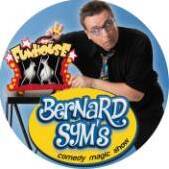Un Tour par Jour durant un An
-
Messages
-
Par Bernard Sym's · Publié le
Ah, Gaëtan je te reconnais bien là avec ton utilisation détournée des fils. 🥰 -
Par Christophe (Kristo) · Publié le
Une nouvelle présentation pour la conférence de Jimmy Delp ! Comment faire grand avec du petit ! Nous sommes ravis de recevoir Jimmy Delp alias « The Orange Magician », ce personnage atypique qu’on a pu voir dans l’émission America’s got talent ou encore Le Plus Grand Cabaret du Monde, avec ses numéros inédits, surprenants et ultra-visuels. Son challenge : faire du très visuel pour impacter un maximum de public avec un minimum de matériel. Son numéro a d’ailleurs voyagé dans le monde avec seulement deux valises, pour des salles jusqu’à 10.000 personnes. Lors de sa conférence, Jimmy Delp partagera sa vision pour transformer le minimalisme en grand, et abordera en profondeur les points suivants: – Les secrets de la création d’un numéro à succès. – Comment faire voyager sa magie. – Qu’est ce qui fait la différence! – Les erreurs à éviter dans le métier Jimmy Delp vous dévoilera ses meilleures routines, ses meilleurs effets et même de la grande illusion que vous serez à votre tour capable de présenter facilement en close-up comme en scène, de 1 à 10.000 spectateurs ! Et tout ça rentrera dans votre plus petit sac !!! Une conférence à voir absolument ! C’est sûr, vous n’aurez plus 78 tours dans votre poche mais au moins 80 et vous repartirez enrichi du partage de l’expérience de Jimmy Delp. It’s good !!! Nous avons fait tirer des tracts pour annoncer nos deux prochaines conférences. Si ça vous dit d'en distribuer à vos amis magiciens, faites-nous signe !
-
Statistiques des membres
-
Statistiques des forums
-
Total des sujets82.3k
-
Total des messages671.8k
-


.gif.ad2268368b5c378aeb1640cd33374882.gif)




(1).gif.65cf9433710b03a02e7253078af7c0c5.gif)

Recommended Posts
Rejoins la conversation !
Tu peux publier maintenant et t'enregistrer plus tard. Si tu as un compte, connecte-toi maintenant pour publier avec ton identité.